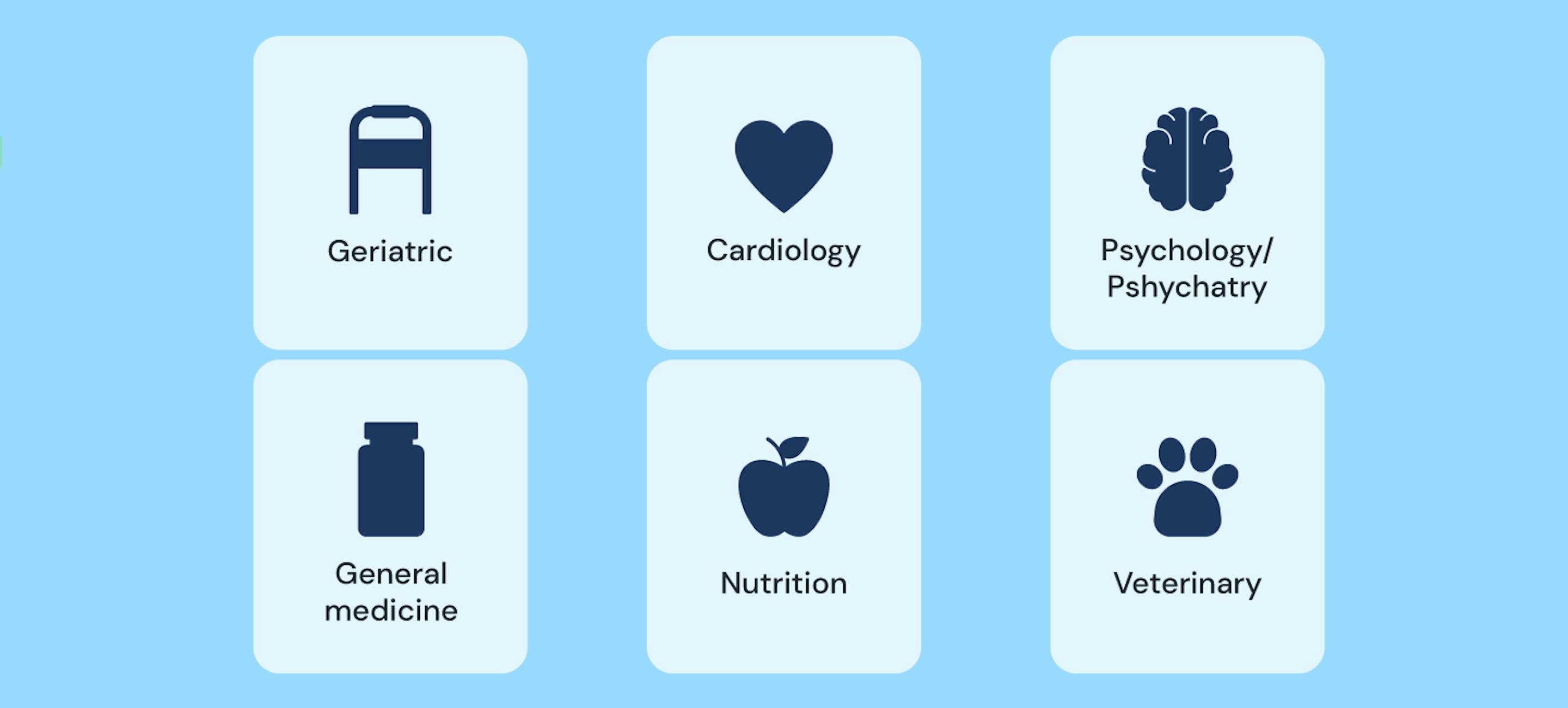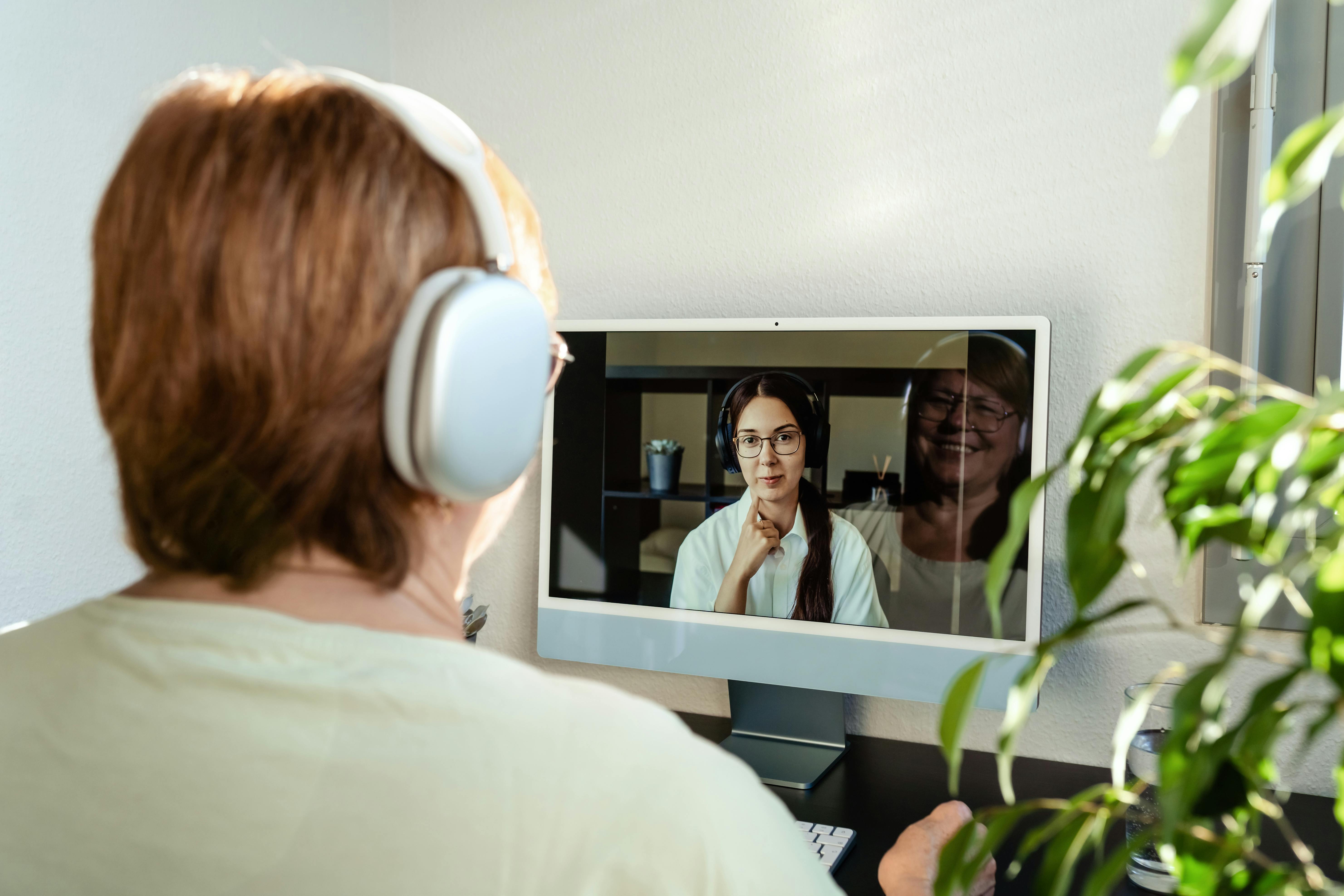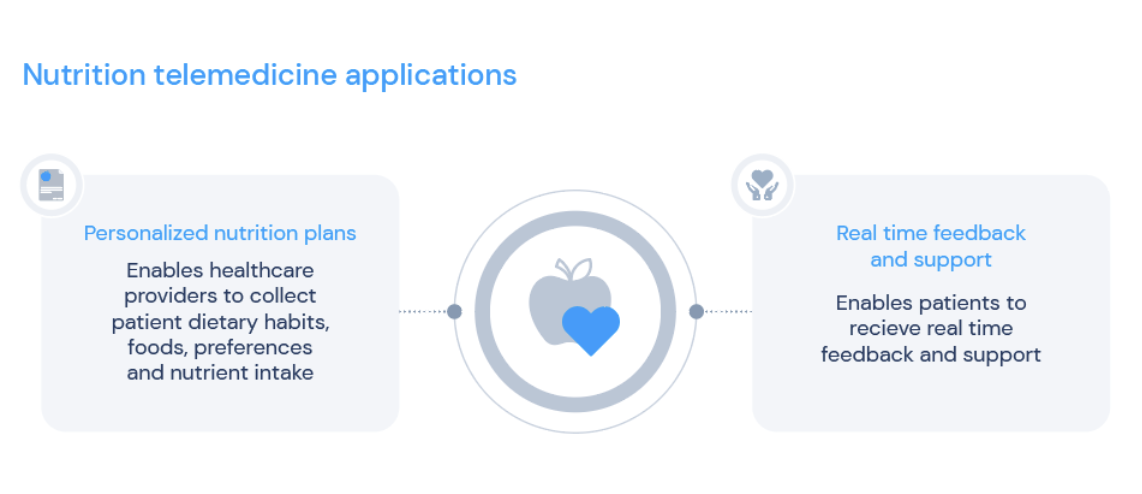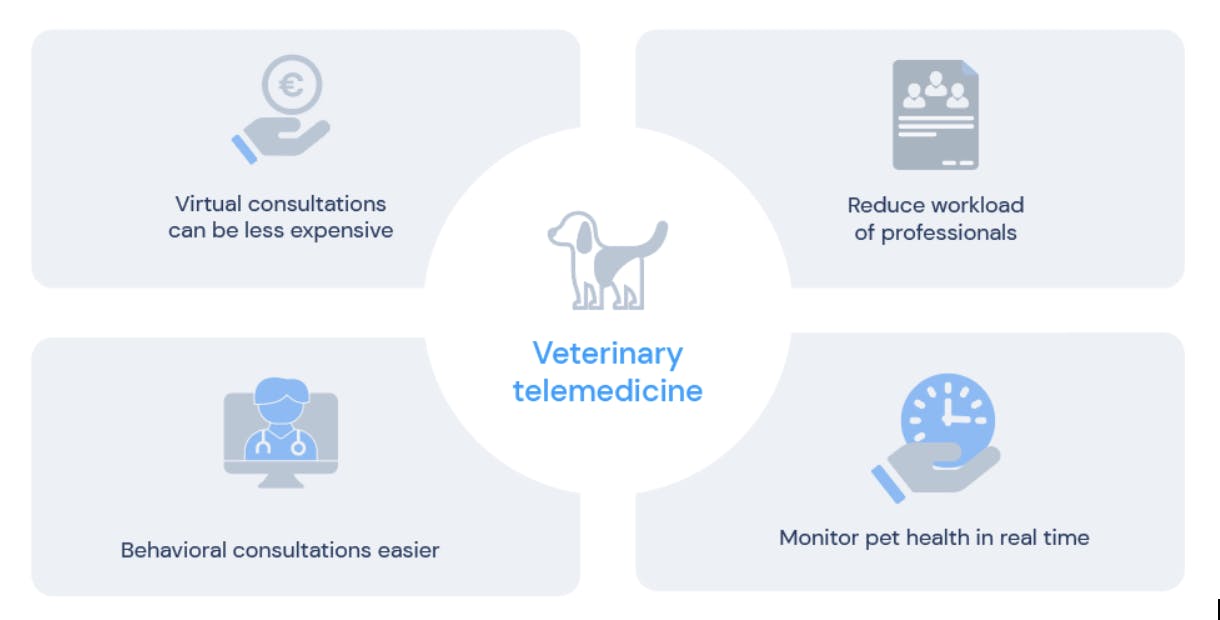
6 clinical specialities that are thriving with data-driven telemedicine
Telemedicine has emerged as a critical tool in healthcare, especially after the COVID-19 pandemic. The term refers to the use of telecommunication technology, such as video conferencing and messaging, to provide patients with remote medical care, diagnosis, and treatment. This technology has revolutionized how doctors and patients interact, making accessing healthcare services more accessible and more convenient.
Therefore, data-driven telemedicine extends the usage of data analytics to enhance remote patient care. With this model, healthcare providers can use electronic health records (EHRs) and other data sources to make more informed decisions about patient care. This approach is especially beneficial in clinical specialities that require the analysis of extensive data, such as records, family history, lab results and prior exams.
Data-driven telemedicine is leveraging a new era of value-based care, where doctors can better track patient progress and tailor treatment plans to individual needs. However, doctors need time and space to adapt to this new model of care. They need to connect the dots between digital health and traditional medicine. Once fully onboard, the possibilities are endless.
Read more about 6 clinical specialties that are thriving with data-driven telemedicine and how this type of care can really change how doctors treat patients and how patients interact with their own health and well-being.
1. General Medicine
General medicine has seen tremendous benefits from the rise of data-driven telemedicine. With wearables and remote monitoring tools, healthcare providers can collect vast patient data, including vital signs, activity levels, and sleep patterns. This collection of health data enables doctors to make more informed decisions about patient care, monitor the effectiveness of treatment plans, and identify potential issues before they become severe.
One of the most significant benefits of data-driven telemedicine for general medicine is the effective management of chronic diseases. Chronic conditions like diabetes, hypertension, and heart disease require ongoing monitoring and control, which can be challenging for patients to do independently. Ultimately, the data collected from monitoring tools and wearables allows healthcare professionals to keep track of patients' health in real-time, scheduling telemedicine appointments or providing early intervention when necessary, and even making necessary adjustments to treatment plans.
The advantages of data-driven telemedicine over traditional consultations are numerous. With virtual care, healthcare providers have access to a much larger dataset, enabling them to make more informed decisions about patient care. They can also analyze trends in patient data, which can help identify issues before they become severe. Moreover, patients can receive more personalized care, with treatment plans tailored to their specific needs and based on their health data.
An example of advanced telemedicine is augmented telemedicine. The emerging field of augmented telemedicine can revolutionize healthcare by combining the benefits of data-driven telemedicine with the advanced diagnostic and treatment capabilities of technologies such as artificial intelligence (AI) and machine learning. The technology allows healthcare providers to examine patients remotely using augmented reality and interact with medical images and devices in real-time. Additionally, patients can benefit from virtual consultations, receiving personalized treatment plans based on their health data.
Looking forward, there are major expectations for innovation in the field of data-driven telemedicine for general medicine. With the growth of AI and machine learning, healthcare providers will have even more powerful tools, enabling them to analyze vast amounts of patient data quickly and accurately. Wearables and remote monitoring tools also continue to improve, becoming even more accurate, accessible and user-friendly, enabling more patients to receive the benefits of data-driven telemedicine.
2. Psychology and Psychiatry
The rise of telemedicine has had a significant impact on psychology and psychiatry, making it easier for patients to access mental health services from anywhere in the world. With the help of video conferencing and digital health platforms, patients can receive care from licensed therapists and psychiatrists, even if they are located in areas where mental health services are limited or unavailable.
Besides accessibility, telemedicine allowed patients to seek mental health consultations from the comfort of their own homes. This is especially important for patients with mobility issues, transportation limitations, or social anxiety, who may find it challenging to attend in-person appointments. Video consultations allow patients to receive care from anywhere with an internet connection, making mental health services also more approachable in places where there’s still stigma around this type of care.
In this case, data-driven telemedicine streamlines the exchange of information in cases of multidisciplinary treatments that combine both psychological and psychiatric care. It also aids healthcare professionals from other specialties to have a comprehensive view of the patient, such as continuous medication, hospitalisations and much more.
Besides, data-driven telemedicine allows for greater flexibility in care delivery, with the ability to provide care asynchronously, in real-time, or in a hybrid model that combines both approaches. Patients can access therapy or counselling sessions through video conferencing or digital platforms, and providers can use the data collected from these sessions to inform treatment plans and monitor patient progress.
The future of data-driven telemedicine for mental health is the development of more sophisticated predictive analytics tools that can identify patients at risk of mental health issues before they become severe. By analysing patient data and history collected through telemedicine, healthcare providers could identify patterns and risk factors associated with mental health issues, allowing for earlier intervention and prevention of severe mental health problems.

3. Cardiology
The field of cardiology has been revolutionised by telemedicine and data. One of the most significant advantages is remote monitoring of the heart conditions, which has become a crucial aspect of cardiac care. Since it allows healthcare providers to keep track of patients' heart health in real-time and intervene early when necessary, they can collect data on patients' heart rates, rhythm, and activity levels through remote monitoring tools and wearables. This information can help identify potential issues before they become irreversible, enabling cardiologists to make the necessary adjustments to treatment plans and provide timely interventions.
One area of potential innovation is the integration of telemedicine with advanced cardiac imaging technologies such as echocardiography and magnetic resonance imaging (MRI), enabling healthcare providers to diagnose and monitor heart conditions more effectively even if in a remote setting. Data-driven telemedicine can transmit these images to healthcare providers in real time, allowing them to make more informed decisions about patient care.
There are several examples of telemedicine used in cardiology:
Telecardiology clinics: Some healthcare systems have established telecardiology clinics where patients can receive specialized cardiac care remotely without travelling to a physical clinic.
Echocardiography: Advanced cardiac imaging technologies can provide detailed heart images, enabling healthcare providers to diagnose and monitor heart conditions in any setting. These images can be transmitted in real-time to healthcare providers using telemedicine.
Remote cardiac rehabilitation: Patients recovering from a heart attack or heart surgery can participate in remote cardiac rehabilitation programs that include exercise training, counselling, and education.
4. Nutrition
The field of nutrition has also witnessed significant benefits from the advent of data-driven telemedicine. Through remote dietary advice and patient monitoring, healthcare providers can now deliver more personalized care, enhancing patient compliance and improving health outcomes, especially for those with chronic conditions like obesity, diabetes, and heart disease. These advancements have transformed how nutritional care is delivered, enabling patients to access quality care regardless of location and ultimately promoting better health and well-being.
One of the significant advantages of the combination of data-driven telemedicine with nutrition is the ability to collect vast amounts of patient data, including dietary habits, food preferences, and nutrient intake. This information enables healthcare providers to develop more personalized nutrition plans based on patient's needs and preferences. By analyzing patient data, healthcare providers can identify areas where patients may struggle and provide additional support and guidance.
This model of care also enables remote monitoring of patients, allowing nutritionists or dietitians to be accessible to patients at any time and even implement a multidisciplinary approach with other healthcare professionals, such as endocrinologists, cardiologists and others. With remote monitoring tools, patients can also receive real-time feedback and support, which can help them stay motivated and on track with their nutrition goals.

5. Veterinary Medicine
Veterinary medicine is another field that has seen significant benefits from the rise of telemedicine, particularly in the remote diagnosis and treatment of pets. With telemedicine tools like video conferencing and mobile apps, pet owners can connect with veterinary professionals for consultations and follow-up appointments. Remote monitoring devices can also track a pet's health status and alert pet owners and veterinary professionals when necessary.
One of the most significant advantages of data-driven telemedicine in veterinary medicine is the improved accessibility to care. Video consultations allow pet owners who live outside of urban centers to get high-quality services and consultations for their animals, improving the overall health of the pet and decreasing the financial burden of the owner. That’s because telemedicine can be a more cost-effective option for pet owners. Virtual consultations can be less expensive than in-person appointments and remote monitoring can help prevent costly emergency visits by catching potential health issues early.
Telemedicine can also benefit veterinary professionals by reducing their workload and improving efficiency. By using telemedicine for non-urgent cases, they can focus on more critical patients that require in-person attention.
Veterinary medicine also benefits behavioural consultations. Behavioural issues are common in pets but can be challenging to diagnose and treat. With telemedicine, pet owners can connect with veterinarians and receive personalised advice and treatment plans for their pets.
One challenge of data-driven telemedicine in veterinary medicine is the need for accurate and reliable health data. Unlike human patients, pets cannot communicate directly with their veterinary professionals so data collection can be more challenging. However, advances in remote monitoring technology can help address this challenge by providing more detailed and precise information on a pet's health.

6. Geriatrics
Geriatrics, the medical speciality that caters to the healthcare needs of elderly patients, has been transformed by the rise of data-driven telemedicine. Remote monitoring, facilitated by wearables like smartwatches and activity trackers, as well as tools like glucose monitors and blood pressure cuffs, has become a crucial tool in managing the health of elderly patients. This technology provides real-time data on vital signs and other health metrics, enabling healthcare providers to detect potential health issues early and adjust treatment plans accordingly.
Remote monitoring is particularly significant in geriatrics since managing chronic conditions is critical to care. With real-time data, healthcare providers can track patient health and provide early intervention when necessary. For example, a heart disease patient experiences an abnormal blood pressure spike, their doctor receives the alert of the occurrence through the integration of the remote monitoring device and action can be taken to prevent a more severe event.
The future of data-driven telemedicine in geriatrics is expected to implement even more powerful tools such as artificial intelligence and machine learning. These technologies can help analyze vast amounts of patient data quickly and accurately, which can be especially helpful in geriatrics for cases like nursing homes and specialised hospitals. For example, AI-powered algorithms could predict which patients are at the highest risk of falls and provide targeted interventions to prevent them. Nevertheless, it is essential to acknowledge that not all elderly patients have access to or are comfortable with technology, and the potential for data overload is a concern.
Overall, data-driven telemedicine has revolutionised geriatrics by providing healthcare providers with powerful tools to manage chronic conditions, deliver personalised care, and make more informed decisions about patient care. With continued innovation and development, the potential for data-driven telemedicine to revolutionize geriatric care is vast, providing better care and improved quality of life for elderly patients.
The telemedicine revolution
Ultimately, data-driven telemedicine can transform healthcare across various clinical specialities. The benefits of remote monitoring and digital consultations include improved patient outcomes, increased access to care, and more personalized treatment plans. The use of wearables, remote monitoring tools, and video conferencing platforms enable healthcare providers to collect vast amounts of patient data, analyse trends, and make informed decisions about patient care.
Continued innovation in the field is crucial to unlocking the full potential of data-driven telemedicine. The development of more advanced wearables and remote monitoring tools, the integration of telemedicine with other healthcare technologies, and the use of artificial intelligence and machine learning for data analysis are just a few examples of the areas where we can expect modern developments.
The continuous growth and adoption of data-driven telemedicine by healthcare providers, payors and patients, allows health technology companies to develop specific digital health platforms that combine all of the benefits of this model of care. At knok, for example, we have worked hard to be able to ensure our platform’s ability to collect over 150 health data points in every consultation. With Panacea, healthcare providers are also able to use this information to deliver multidisciplinary treatments inside the platform and even create patient journeys for specific use cases and diseases.
All of this is only possible due to our experienced data engineering team and our commitment to data security, privacy and compliance to local GDPR applications. By being able to separate medical data from personal information, we provide crucial information about patients to make sure healthcare providers can deliver high-quality care to everyone, everywhere.
Sources
1. Sciforce (2021) Top 5 Medical Specialties Most Interested in Telehealth. Sciforce, Majeed A, Molokhia M, Singh S. Telemedicine in general practice: Review of systematic reviews. Royal College of General Practitioners. 2016.
2. Backhaus A, Agha Z, Maglione ML, et al. Videoconferencing psychotherapy: A systematic review. Psychol Serv. 2012;9(2):111-131.
3. Hilty DM, Ferrer DC, Parish MB, et al. The effectiveness of telemental health: A 2013 review. Telemed J E Health. 2013;19(6):444-454.
3. Ghilencea, L. N., Chiru, M. R., Stolcova, M., Spiridon, G., Manea, L. M., Stănescu, A. M. A., ... & Di Mario, C. (2022). Telemedicine: Benefits for Cardiovascular Patients in the COVID-19 Era. Frontiers in cardiovascular medicine, 9, 868635.
4. Gerges, S., & Hallit, S. (2022). Pros and cons of telemedicine: implications in cardiology and cardiovascular medicine. Future Cardiology, 18(11), 843-847.
5. Su, D., McBride, C., Zhou, J., & Kelley, M. S. (2016). Does nutritional counseling in telemedicine improve treatment outcomes for diabetes? A systematic review and meta-analysis of results from 92 studies. Journal of Telemedicine and telecare, 22(6), 333-347.
6. Moreira, Joana (2020). PERCEPTION OF COMMUNICATION STRATEGIES, SATISFACTION AND QUALITY OF NUTRITION TELECONSULTATION DURING THE COVID-19 PANDEMIC.
7. Mauldin, K., Gieng, J., Saarony, D., & Hu, C. (2021). Performing nutrition assessment remotely via telehealth. Nutrition in Clinical Practice, 36(4), 751-768.
8. Kastelic, J., & Ogilvie, T. (2021). Veterinary Telemedicine is not only here to stay, it's poised to grow and likely exponentially. The Canadian veterinary journal = La revue veterinaire canadienne, 62(12), 1277–1279.
Health for Animals (n.d) Telemedicine: a new frontier for veterinary clinics. Global Animal Health Association
9. Huang HK, Bashshur RL. Special issue: Telemedicine in geriatrics. Geriatrics. 2016;1(1):8.
10. knokcare (2022). Seasoning digital health for the elderly. A case study of knok's ATIV project.